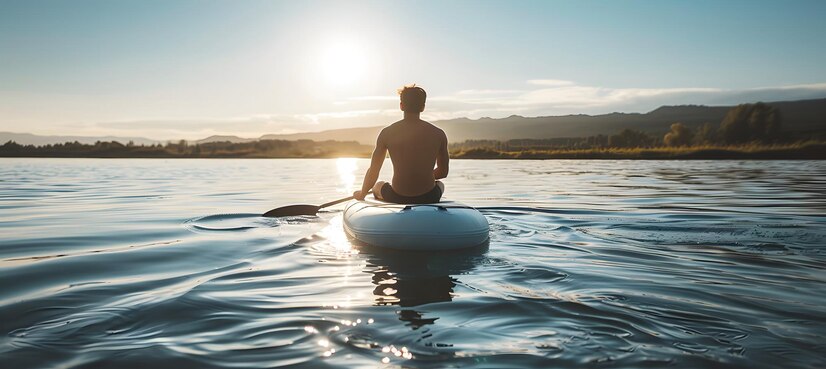Storing your inflatable paddle board (SUP) properly is essential to maintain its durability and performance. Whether you’re a seasoned paddler or a beginner, following the right storage practices can significantly extend the lifespan of your paddleboard. This article will guide you through the best ways to store your inflatable paddle board, ensuring that it stays in top condition for your next adventure.
Why Proper Storage is Crucial
Inflatable paddleboards are a fantastic choice for their portability and convenience. However, improper storage can lead to a host of problems, including damage from UV rays, mildew growth, and punctures. To keep your paddleboards in optimal condition, consider the following storage tips.
Cleaning Your Inflatable Paddle Board Before Storage
Before you put your inflatable paddle board away, it’s crucial to clean it thoroughly. Dirt, sand, and salt can cause long-term damage to your SUP if left unattended. Here’s how to clean your paddle board:
- Rinse Thoroughly: Use fresh water to rinse off any salt, sand, or debris. A gentle hose or bucket of water will suffice.
- Clean with Mild Soap: If needed, use a mild soap or non-abrasive cleaner. Avoid harsh chemicals as they can degrade the board’s material.
- Dry Completely: Ensure that the board is completely dry before storing it. Moisture left on the board can lead to mildew and mold growth.
Deflating Your Paddleboard
Once the board is clean and dry, it’s time to deflate it. Proper deflation is key to preventing damage and ensuring easy storage:
- Open the Valve: Release the air by opening the valve. Most inflatable paddleboards come with a valve that allows for quick deflation.
- Gently Roll Up: Once deflated, start rolling the paddleboard from the nose to the tail. This helps expel any remaining air and keeps the board compact.
Choosing the Right Storage Location
Selecting the right storage location is vital to protecting your inflatable paddle board from environmental factors. Here are some tips for choosing the ideal spot:
- Cool and Dry Area: Store your paddleboard in a cool, dry place away from direct sunlight. UV rays can damage the board’s material over time.
- Avoid Extreme Temperatures: Extreme cold or heat can affect the board’s integrity. A temperature-controlled environment is best.
- Elevated Storage: If possible, keep the board off the ground to avoid exposure to moisture and pests.
Read Also: Free Methods to Office 365 Backup
Using a Storage Bag
Investing in a dedicated storage bag for your inflatable paddle board can provide additional protection. Many paddleboards come with a storage bag, but if yours didn’t, consider purchasing one. Here’s why a storage bag is beneficial:
- Protection from Dust and Debris: A storage bag helps keep the board clean and free from dust.
- Ease of Transport: A bag makes it easier to transport and store your paddleboard without the risk of damage.
- Organized Storage: It helps keep your paddleboard and accessories organized and in one place.
Storing the Paddleboard Indoors vs. Outdoors
While it’s generally better to store your inflatable paddle board indoors, there are options if outdoor storage is your only choice:
- Indoor Storage: Keeping your paddleboard indoors is preferable. A basement, garage, or closet can be ideal locations.
- Outdoor Storage: If you must store it outside, use a waterproof cover to protect it from rain and UV rays. Ensure the cover is securely fastened to prevent wind from blowing it away.
Regular Maintenance Checks
Even when not in use, it’s important to periodically check the condition of your paddleboard:
- Inspect for Damage: Regularly check for any signs of wear, such as punctures or tears. Address any issues immediately to prevent further damage.
- Check Inflation: Ensure that the board remains properly inflated if stored in a partially inflated state. This helps maintain its shape and prevents deformities.
Final Tips for Storing Paddleboards
Here are a few additional tips to ensure your inflatable paddle board remains in top condition:
- Avoid Sharp Objects: Keep the board away from sharp objects that could cause punctures.
- Store Accessories Separately: Store your paddle, leash, and other accessories separately to avoid damaging the board.
- Follow Manufacturer’s Guidelines: Always refer to the manufacturer’s storage recommendations for your specific paddleboard model.
Conclusion
Proper storage of your inflatable paddle board is crucial to maintaining its performance and longevity. By cleaning the board, choosing the right storage location, using a storage bag, and performing regular maintenance checks, you can ensure that your paddleboard remains in excellent condition. Whether you’re storing it indoors or outdoors, following these best practices will help you get the most out of your inflatable paddle board and keep it ready for your next adventure.










 /home/u448362301/domains/theexpotab.com/public_html/wp-content/themes/foxiz/templates/popup.php on line 167
/home/u448362301/domains/theexpotab.com/public_html/wp-content/themes/foxiz/templates/popup.php on line 167